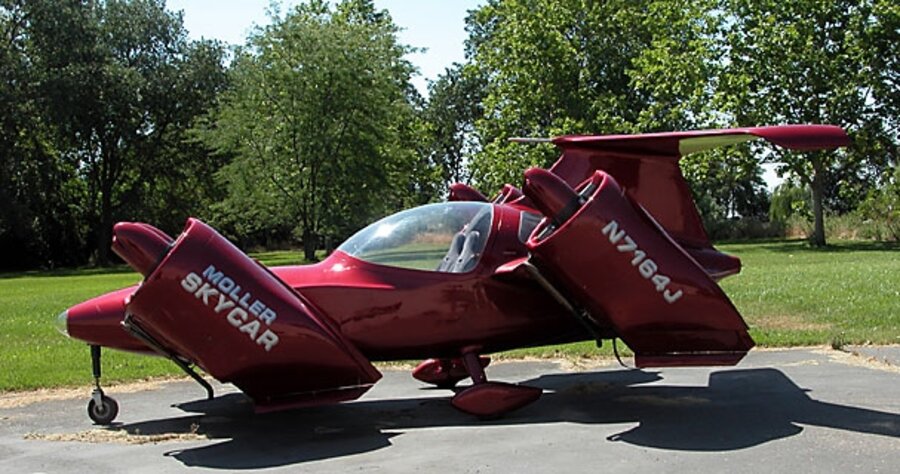Can we have sustainable flying cars?
Loading...
It's the holiday season again, which means a flurry of stories about outlandish fantasy gifts. One that stands out is the Moller Skycar M400, a personal aircraft that can take off and land vertically, reach an altitude of 36,000 feet, and travel at speeds of up to 375 miles per hour. All yours for less than a million dollars.
But before you reach for your credit card, you should know that the M400 is not ready for prime time, and may never be. The company has been taking refundable deposits since 2003, but has not yet sold a single aircraft. The 2005 Neiman Marcus catalog featured one for$3.5 million, where it failed to find any buyers. The following year, the company tried to auction it on eBay, where it also failed to sell.
In 2003, Moller International was hit with a $50,000 fine by the Securities and Exchange Commission for making "false and misleading statements and omissions" to investors about the Skycar. The regulatory agency's complaint stated that the investor newsletter projected that 10,000 Skycars would be sold by the end of 2002, while in reality the vehicle was "a very early developmental-stage prototype that has no meaningful flight testing, proof of aeronautical feasibility, or proven commercial viability."
But high price tags and hyped ads are not enough to kill the dream of commuting through the clouds à la George Jetson. The flying car has been pined for by all of humanity – or at least the adolescent male segment of it – since the dawn of its earthbound counterpart. The real question is, can we do so while keeping our carbon footprint small? Or does a sustainable future necessarily entail everyone taking the bus?
It turns out that the Moller M400's fuel efficiency is not as terrible as one might expect. The company says that its aircraft – which runs on four Wankel rotary engines – gets 20 miles per gallon of gasoline, which, considering you can fly it in a straight line to your destination, makes it look pretty good next to most SUVs, if it's indeed true. The M400 is also designed to burn diesel, natural gas, and other fuels.
But we can probably do better. In January, two entrepreneurs will travel from London to Timbuktu, Mali. Their mode of conveyance: The Parajet SkyCar, which looks like a dune buggy with an industrial fan on the back, strapped to a parafoil. It has a top speed of about 68 mph. The vehicle runs entirely on bioethanol (the company doesn't specify the fuel efficiency) and, unlike the M400, is a true flying car, functioning as both a car and an aircraft. It's road-legal in the United Kingdom, and the company says that conversion from car to aircraft takes less than three minutes.
Parajet says that a commercial model "could be available from 2010 onwards," whatever that means.
But even bioethanol, while not a fossil fuel, is not the cleanest form of energy. That's where German designer Roland Cernat comes in. His design for a two-seat solar-powered bubble glider won him the 2008 Lucky Strike Junior Designer Award (awful product, great logo). His Oriens Glider sports solar panels along the wings, which it uses to power a propeller for takeoff. Once in the air, the glider, well, glides, using no energy at all.
What's more, it's designed according to "cradle-to-cradle" principles, meaning that it is constructed entirely out of parts that can be infinitely recycled, producing zero waste.
The glider's most environmentally friendly quality, however, is that it doesn't exist yet.
It's probably a good thing that flying-car technology isn't quite ready yet, as I'm not convinced that the driving public is ready to take to the skies. Road rage takes on a whole new meaning when the ground is thousands of feet below. Maybe the promise of high-speed, three-dimensional mobility will prompt would-be pilots to grow up a bit.
But until then, I'd prefer to walk.





